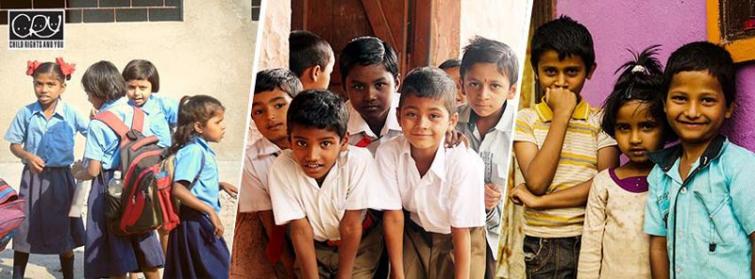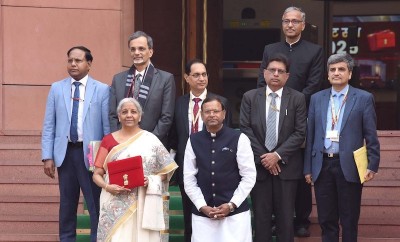
Stakeholders engage in National Child Labour Consultation to discuss gaps in CLPRA
Kolkata, Sep 13 (IBNS): Recently a national child labour consultation was held in Delhi, where several organisations, participated to discuss the gaps in the Child Labour Prohibition and Regulation Act (CLPRA).
Several civil society organisations (CSO) came together under the banner of CACL – Campaign against Child Labour, a coalition of multiple stakeholders working together for eradicating child labour, for a day-long national consultation, and deliberated on the need to revisit the existing list of hazardous / non-hazardous occupations and processes, while shedding light on the various factors hindering prohibition on child labour in India.
India has recently ratified the core ILO child labour conventions and has Child Labour (Prohibition and Regulation) Act in place, but elimination of child labour is seemingly a long haul battle, believe experts working in this field.
Participants at the meeting discussed whether the recent amendments in the law are in favour of children, and to ideate on a roadmap to tackle the issue of child labour in India.
The CLPRA law prohibits employment of children and adolescents in all hazardous occupations and processes in alignment with the Right of Children to Free and Compulsory Education (RTE) Act, 2009.
However, it makes exception for children below 14 years, where a child is permitted to work only to help family, in family enterprise or as a child artist after school hours or during vacations.
Eradicating child labour still remains a distant dream since it is deeply rooted in the society, and legal accreditation makes it more difficult to achieve.
Also, the current list of hazardous and non-hazardous occupations and processes (derived from the Factories Act 1948) is seen to have been framed considering the risks and challenges of the working adults but not the adolescents, and hence needs a thorough relook.
While the day-long consultation was attended by CSOs such as CRY, TDH, CARITAS, Save the Children etc., other coalitions and groups including Right to Education (RTE) Forum, Campaign against Child Trafficking (CACT), National Action & Coordination Group for Ending Violence Against Children (NACG-EVAC) in India and Workers Union also participated in the consultation.
CACL members expressed that, the amendment in CLPRA Act 2016 fails to address its purported objective of prohibition of child labour from all occupations and processes.
The legislation does not put family and family-based occupations, agriculture and allied sectors, sports & entertainment industry under the purview of the hazardous / non-hazardous list, legalising such work.
“The only way we can change the child labour scenario in India is by working together to ensure children complete their formal education, so that they are not pushed to enter labour, and this cannot happen without total eradication of child labour from the country. The recent amendments in CLPRA needs a relook and we are ready to work with government and other stakeholders to find solutions and alternatives for the same,” Ashok Kumar, National Advocacy Convener at CACL, said.
CRY – Child Rights and You advocated that each child must complete at least 12 years of quality education, and has the right to live learn grow and play in a protective environment.
CRY also presented a legal analysis of the schedule containing the list of hazardous and non-hazardous occupations and processes of the Child & Adolescent Labour (Prohibition and Regulation) Act, 1986.
“The recent amendment in the CLPRA is not essentially child-centric and needs further reconsideration. We need to decipher how our concerns around child labour can be merged with the concerns and efforts by the government, so that the battle against child labour becomes more robust and comprehensive,” said Priti Mahara, Director of Policy Research and Advocacy at CRY.
“Our approach (in addressing child labour) should be more elaborate, and holistic – involving all aspects of dealing with child labour seems to be the key to address the issue,” said Rosy Taba, Member – Elimination of Child Labour, NCPCR, Government of India.
Education is deemed a significant factor to protect children, since out-of-school children are at higher risk of being engaged in labour.
To address this challenge, CLPRA’s recent amendment links minimum permissible employment age with the age of compulsory education under Right to Education (RTE) Act, while simultaneously ratifying ILO’s two core child labour conventions.
“In June 2017 India has ratified two conventions of ILO – 138 (dealing with the minimum age of engaging in labour) and 182 (dealing with the worst forms of labour)," she said.
Therefore, the Govt. of India is mandated to report to ILO on the progress and action taken by the government to ensure the reduction or complete eradication of child labour,” said Ranjit Prakash, National Project Coordinator at Fundamental Principles and Rights at Work (FPRW), International Labour Organisation (ILO).
Trying to arrive at a long term road map to address child labour, the speakers and participants observed that, it is of utmost importance that the list of hazardous works identified in the existing child labour legislation is relooked and progressively increased.
Also, it is vital to simultaneously strengthen the social welfare schemes, child protection system and educational opportunities for children, so that their rights to play and leisure along with compulsory education are restored.
Going by the Census data (2011), there are more than 10 million child labourers (between 5-14 years of age) and over 22 million working children (between 15-18 years) in India.
Image Credit: CRY/Facebook
Support Our Journalism
We cannot do without you.. your contribution supports unbiased journalism
IBNS is not driven by any ism- not wokeism, not racism, not skewed secularism, not hyper right-wing or left liberal ideals, nor by any hardline religious beliefs or hyper nationalism. We want to serve you good old objective news, as they are. We do not judge or preach. We let people decide for themselves. We only try to present factual and well-sourced news.







